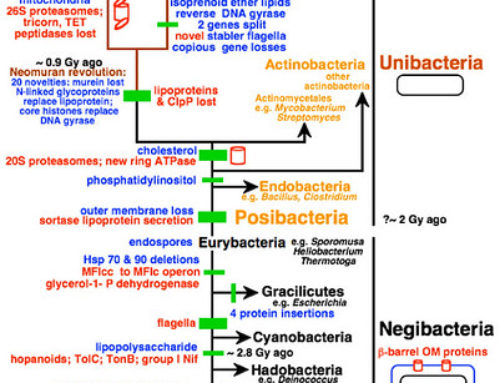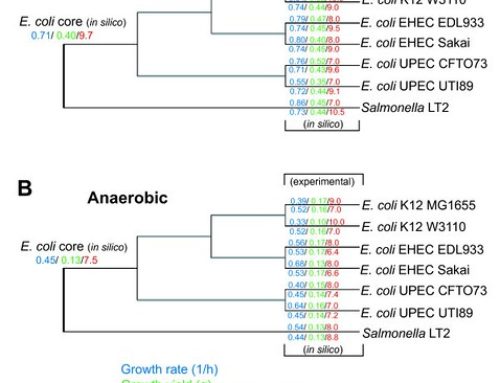Growth Cycle
Bacteria reproduce by binary fission: one cell divides to form 2 progeny cells. This results in exponential (logarithmic) growth.
1.
- Number of cells 1 2 4 8 16
- Exponential 20 21 22 23 24
- One bacterial cell produces 16 cells after just 4 generations….yikes!
- Some bacteria, like E. coli, which can cause diarrhea, have a generation time of 20 minutes….a short generation time + exponential growth = big trouble.
- Some bacteria, like Mycobacterium tuberculosis, have a longer generation time; this can also cause big trouble, but it takes longer.
- Bacteria can grow in a variety of forms in the laboratory:
- as colonies on a solid nutrient medium.
- in a broth culture in suspension.
- in biofilms in which growth is spread over an inert surface and nutrients are obtained from a fluid that bathes the surface.
- The growth cycle of bacteria in broth culture has 4 major phases:
- lag phase: period of adaptation to environment and preparation for cell division with high metabolic activity, no cell division.
- log phase: period of rapid cell division and production of cell constituents, including peptidoglycan. β–lactam drugs are most effective during this phase.
- stationary phase: growth slows due to nutrient depletion and accumulation of toxic products; cell number in a steady state due to a balance of cell division and cell death.
- death phase: number of viable bacteria declines.
- Gene expression can vary greatly during these different phases, e.g. cells in stationary phase are often more resistant to stresses than cells in log phase.
- How are bacteria counted?
- Direct cell count: does not determine if cells can divide
- Turbidity of culture: proportional to the cell mass
- Viable cell counts: dilutions of the specimen or culture are tested for growth on nutrient agar plates. Used to determine the number of colony-forming units (CFU) per milliliter, i.e. the number of cells capable of dividing under provided conditions. Ex. Lab test for diagnosis of UTIs.
Photo by Internet Archive Book Images






Leave a Reply